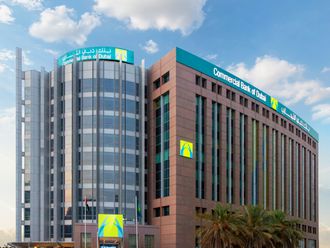Dubai: Oman’s weakening macroeconomic conditions in the context of prolonged low oil prices and fiscal consolidation efforts further slowing down economic growth have weakened the country’s banking sector outlook, according to analysts.
Global credit rating agency Moody’s last week downgraded Oman’s banking sector outlook to negative from stable reflecting softer economic growth, tight liquidity conditions and the declining capacity of the Government of Oman rated at Baa2 negative to support the country’s banks in case of need.
Moody’s outlook change for banks follows its sovereign credit rating downgrade last month. Other global rating agencies such as Standard & Poor’s and Fitch had revised Oman’s ratings in recent months with S&P assigning a sub-investment grade rating and Fitch revising outlook to negative from stable.
Moody’s analysts expect continued fiscal consolidation and a limited increase in hydrocarbon production to slow real GDP growth to 0.3 per cent in 2017, recovering to 2.2 per cent in 2018, from 2.3 per cent in 2016 and an average 3.9 per cent over 2011-15. This is expected to weigh on credit growth, which will decline to around 5 per cent in 2017, from 10 per cent in 2016.
“We expect a softening in Oman’s operating environment, with fiscal consolidation amid prolonged oil price weakness weighing on economic growth,” said Mik Kabeya, an analyst at Moody’s.
Analysts say Oman’ banking sector is caught up in low growth operating environment resulting from lower government revenues leading to lower government spending. Planned fiscal adjustments to meet the revenue deficits are constraining government spending and investments, further impacting banking sector asset growth, profitability and asset quality.
“Non-oil real GDP growth, which is correlated with government spending with a lag of about one year is expected to remain lower than in 2012-14. This reflects the importance of government spending in Oman, given the country’s limited economic diversification,” said Kabeya.
Weaker consumer confidence
Last year, government spending accounted for 47.6 per cent of Oman’s of GDP. Moody’s forecast Oman’s non-oil GDP growth to slow to 1.5 per cent in 2017 and 2 per cent in 2018 from an average of 6 per cent between 2012 and 2016.
Weaker economic growth and business activity are expected to result in lower loan growth and weaker consumer confidence, while lower deposit growth and higher government borrowing will reduce the funds available to lend to the wider economy. “We expect credit growth of around 5 per cent in 2017 (3.3 per cent so far over the first six months of 2017) down from 10.1 per cent in 2016 and 12 per cent in 2015. The slower growth so far this year reflects lower credit demand from private borrowers and large repayments from public enterprises,” said Kabeya.
Loan performance is expected to weaken as problem loans are expected to increase modestly over the next 12-18 months, as the economic slowdown pressures corporate profits and household finances.
Moody’s expect nonperforming loans (NPLs) to increase to around 3 per cent of gross loans by end 2017, from a low 2.1 per cent at March 2017 and 1.9 per cent at December 2015. Corporate loan performance is expected to continue to weaken, as lower business activity combined with potential delayed payments for government projects pressure the repayment capacity of borrowers. However, analysts expect a substantial proportion of banking facilities to the contracting sector to remain secured by government guarantees.
Credit quality in the retail segment is also expected to weaken from potential job losses. “We expect delinquencies in the retail segment to increase as well, as private-sector employees — especially in the hydrocarbon and contracting segments — face job insecurity. However, the retail segment benefits from stronger buffers than during the 2008 crisis, given the higher disposable income of Omani citizens,” said Kabeya.










